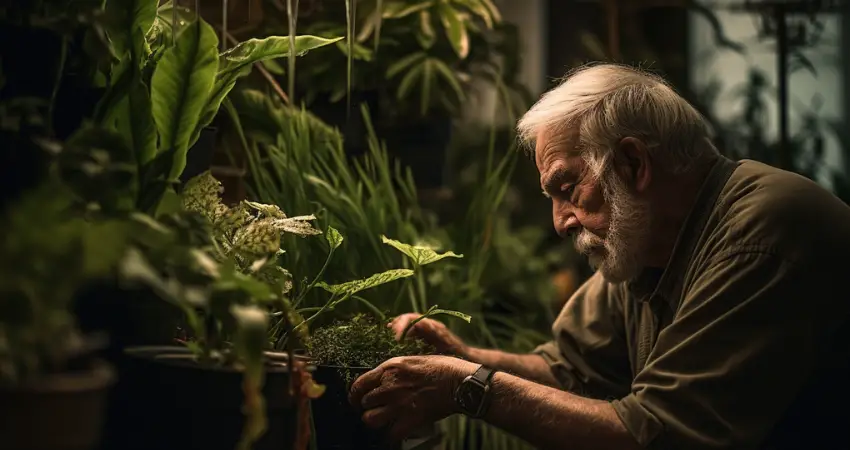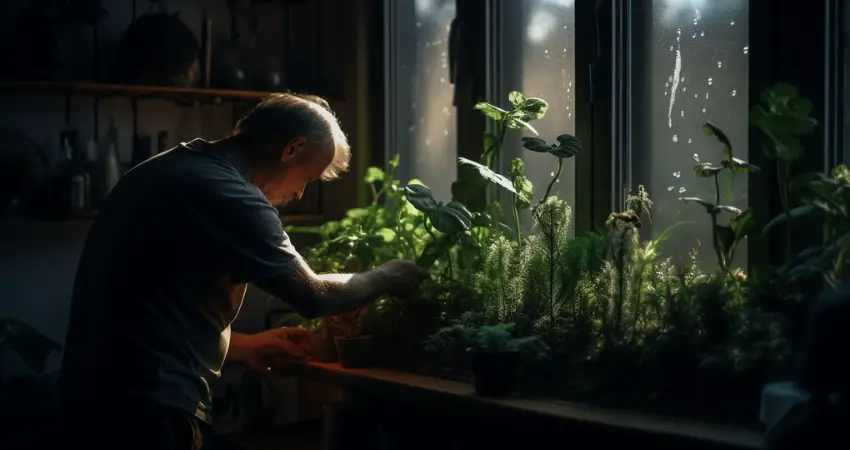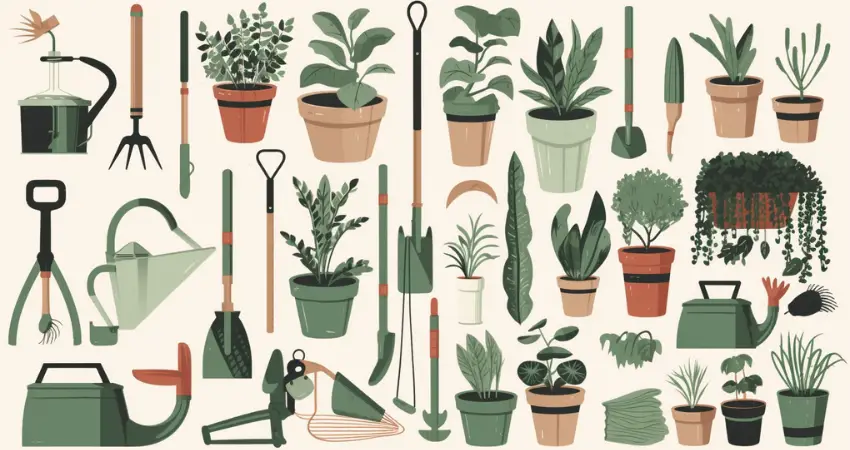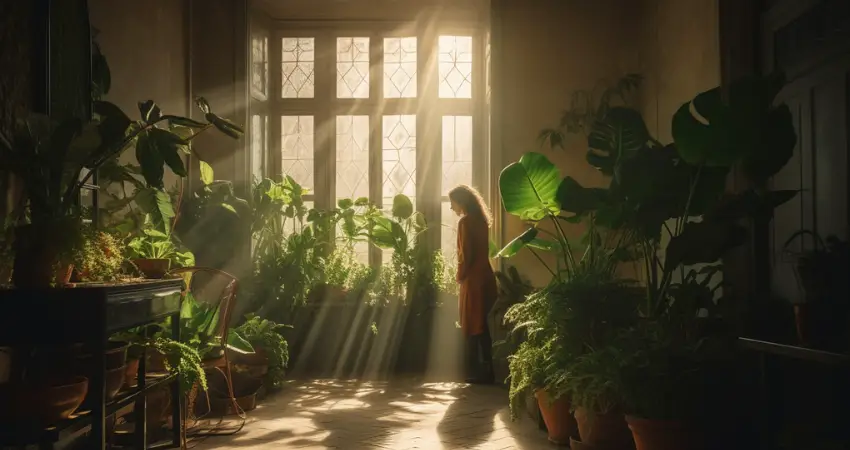Welcome, plant aficionados and aspiring green thumbs! Embark on an enthralling journey as we dive into the heart of indoor plant care – the elusive art of watering. In this comprehensive guide, we will unravel the mystique of hydration and transform you into the ultimate plant whisperer.
From the sun-kissed succulents that savor a sporadic splash to the lush tropical foliage that yearns for a steady shower, each plant requires its unique concoction of care. Unearth the secrets of watering frequencies, soil types, containers, and techniques to create a thriving oasis, teeming with vibrant life.
So, buckle up for this horticultural escapade, as we unlock the wonders of the plant kingdom together, nurturing your indoor garden to flourish under your attentive gaze!
Understanding Plant Water Needs

Plant Types and Their Water Requirements
Different types of indoor plants have varying water needs. For instance:
- Succulents and cacti thrive in arid environments, requiring infrequent watering. Generally, watering them once every two to three weeks is sufficient.
- Tropical plants, such as Monstera or Philodendron, need consistent moisture. Water them at least once a week, depending on the specific plant and environmental conditions.
- Ferns prefer moist environments, so they need to be watered more frequently. Ensure their soil never dries out completely.
- Orchids are epiphytes with unique water requirements. Many varieties do well with weekly watering, but some may need water every few days.
- Air plants (Tillandsia) require regular misting or soaking, usually once or twice a week.
Plant Growth Stages and Water Needs
Water needs can also vary depending on the plant’s growth stage:
- Seedlings require consistent moisture to promote germination and initial growth.
- During vegetative growth, plants develop roots, stems, and foliage, demanding more water.
- During the flowering and fruiting stage, water needs may increase further as plants channel energy into reproductive efforts.
Environmental Factors Affecting Water Needs
Several environmental factors also impact how often you should water your indoor plants:
- Temperature and humidity: High temperatures and low humidity can cause the soil to dry out more quickly, necessitating more frequent watering.
- Light intensity: Plants in bright light might need more water as they photosynthesize at a faster rate and lose moisture through transpiration.
- Seasonal changes: Plants may need less water during winter months due to reduced growth and lower evaporation rates.
Soil and Water Retention

Soil Types and Water-Holding Capacity
Soil type plays a significant role in how much water it can retain. Some common indoor plant soil types are:
- Loamy soil: A well-balanced mixture of sand, silt, and clay, loamy soil retains moisture well while also allowing for proper drainage.
- Sandy soil: Quick-draining and well-aerated, sandy soil requires more frequent watering to prevent plants from drying out.
- Clay soil: Dense and slow-draining, clay soil retains water longer, reducing the need for frequent watering.
- Peat-based potting mix: Highly absorbent, peat-based mixes are suitable for moisture-loving plants but can become compacted over time.
- Coconut coir: A sustainable alternative to peat, coconut coir has excellent water retention and aeration properties, making it suitable for various plants.
Container Types and Their Impact on Watering
The type of container you use can also affect how often you need to water your plants:
- Plastic pots: Lightweight and affordable, plastic pots retain moisture well but may need additional drainage holes.
- Terracotta pots: Porous and breathable, terracotta pots allow for air exchange and prevent root rot but may require more frequent watering.
- Ceramic pots: Stylish and versatile, ceramic pots can hold moisture well but might retain heat, potentially affecting root health. Ensure proper drainage and monitor soil moisture levels.
- Self-watering planters: These innovative containers contain a water reservoir, slowly releasing moisture to the plant as needed. They can help maintain consistent soil moisture, reducing the need for constant attention.
- Hanging baskets: Often made from wire and lined with materials like coco coir or moss, hanging baskets can dry out quickly due to increased air circulation. Monitor moisture levels closely to prevent underwatering.
Drainage and Root Health
Proper drainage is essential for maintaining healthy roots and preventing issues like root rot. Overwatered plants are susceptible to fungal infections and weakened roots, which can ultimately lead to plant death. Signs of overwatering include yellowing leaves, moldy soil, and a foul smell.
Watering Techniques and Tools

Different Watering Methods
There are several methods for watering indoor plants, each with its own advantages and drawbacks:
- Top-watering: The most common method, simply pour water onto the soil surface, ensuring it penetrates the root zone. Avoid wetting the leaves to prevent fungal diseases.
- Bottom-watering: Fill a tray or saucer with water and place the plant pot in it, allowing the soil to absorb water through the drainage holes. This method promotes deep root growth and reduces the risk of overwatering.
- Sub-irrigation systems: These systems deliver water directly to the plant’s roots via a network of tubes or channels. They can be more efficient and precise than other watering methods.
- Misting and humidity trays: For humidity-loving plants, misting or using humidity trays can provide additional moisture without overwatering the soil.
Watering Tools
A variety of tools can make watering indoor plants easier and more efficient:
- Watering cans: Choose a can with a long spout for precise watering, and consider models with a detachable rose for gentle watering of delicate plants.
- Hose attachments: For larger indoor gardens, hose attachments with adjustable nozzles can make watering more convenient.
- Spray bottles: Ideal for misting plants, spray bottles can also be used for targeted watering of small plants or seedlings.
- Automatic watering systems: For those who travel frequently or have a large plant collection, automatic watering systems can help maintain consistent moisture levels.
Water Quality and Treatment
The quality of the water you use can affect your indoor plants’ health:
- Tap water: While generally safe for plants, tap water can contain chemicals like chlorine and heavy metals, which may be harmful in large quantities.
- Distilled water: Free of impurities, distilled water is ideal for plants sensitive to chemicals, such as carnivorous plants or orchids.
- Rainwater: A natural and sustainable option, rainwater can be beneficial for plants due to its mineral content. However, ensure it is free of contaminants before using it.
- Water softeners and filters: These devices can remove harmful chemicals and minerals from tap water, improving its quality for plant use.
Determining When to Water

Signs Your Plant Needs Water
Several techniques can help you determine when your plants need water:
- Soil moisture tests:
- Finger test: Insert your finger into the soil up to the first knuckle. If it feels dry, it’s time to water.
- Soil moisture meters: These devices measure soil moisture levels and can provide a more accurate assessment of when to water.
- Weight method: Lift the pot to gauge its weight. A lighter pot often indicates dry soil.
- Plant indicators:
- Wilting: Wilted leaves can be a sign that your plant needs water, although it can also indicate overwatering. Assess the soil moisture before deciding to water.
- Leaf color and texture changes: Pale, yellow, or brown leaves can indicate a lack of water, while soft, mushy leaves may suggest overwatering.
- Stunted growth: If your plant’s growth seems slower than usual, it may not be getting enough water. Check the soil moisture to determine if additional watering is necessary.
Watering Frequency Guidelines
Establishing a regular watering schedule can help ensure your plants receive the right amount of moisture:
- General recommendations: While specific needs vary between plants, most indoor plants require watering every 7-10 days. Adjust this frequency based on the factors discussed earlier, such as plant type, soil, and environmental conditions.
- Plant-specific schedules: Research the specific watering needs of each plant in your collection and create a customized schedule accordingly.
- Adjusting for environmental factors: Monitor temperature, humidity, and light conditions in your home and adapt your watering schedule as needed.
Common Watering Mistakes and Solutions
Avoid these common watering mistakes to keep your indoor plants healthy:
- Overwatering: Too much water can lead to root rot and other health issues. Use the techniques mentioned above to determine when your plants need water and avoid overwatering.
- Underwatering: Depriving plants of water can stunt their growth and weaken their overall health. Pay attention to plant cues and maintain a consistent watering schedule.
- Inconsistent watering schedule: Inconsistencies in watering can stress plants and inhibit their growth. Establish a regular schedule and adjust it as needed based on plant type and environmental factors.
- Using the wrong watering technique: Different plants and situations call for various watering methods. Research the best method for each plant and use the appropriate tools to ensure efficient watering.
- Ignoring plant and environmental cues: Regularly assess your plants’ health and the environment to determine when adjustments to your watering schedule are necessary.
Conclusion
Caring for indoor plants requires a keen eye for observation and a willingness to adapt to their needs. With this in-depth guide to watering schedules, you can confidently create a tailored plan for your plant collection, ensuring they receive the right amount of moisture to thrive. Remember that each plant is unique, and learning from experience is a vital part of becoming a successful plant caretaker.
